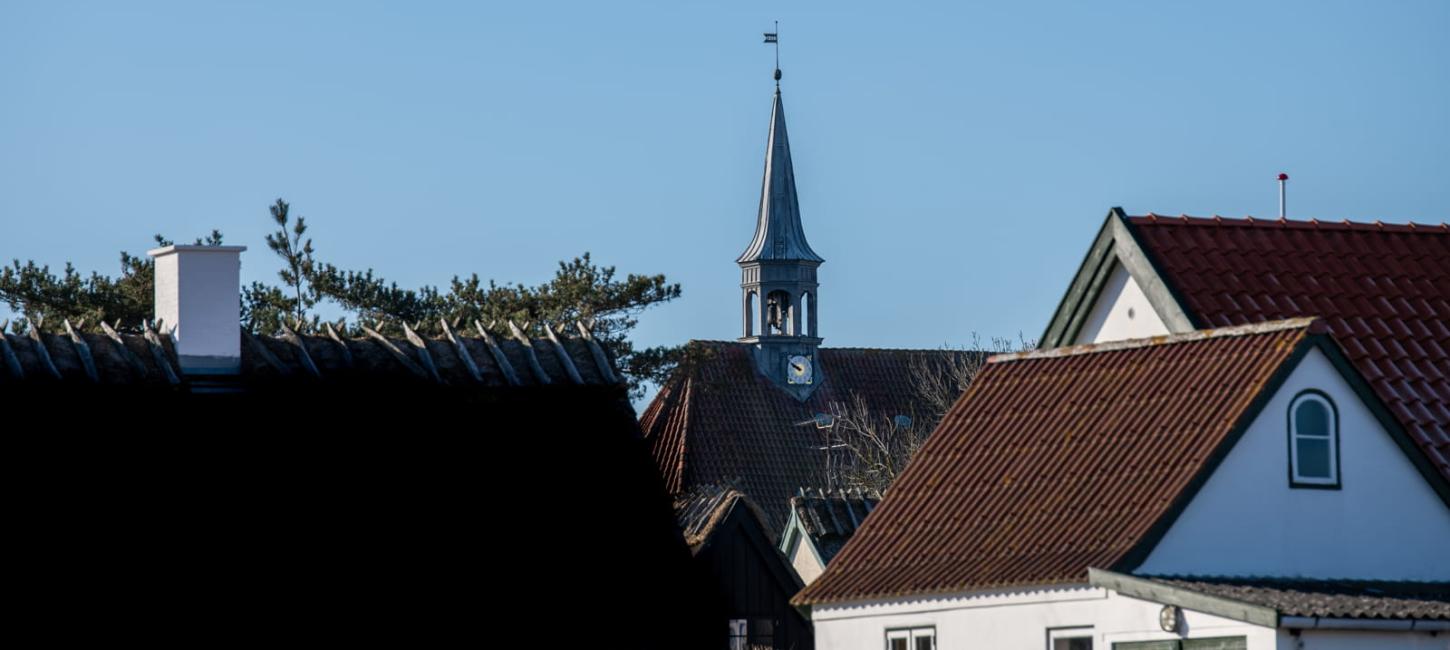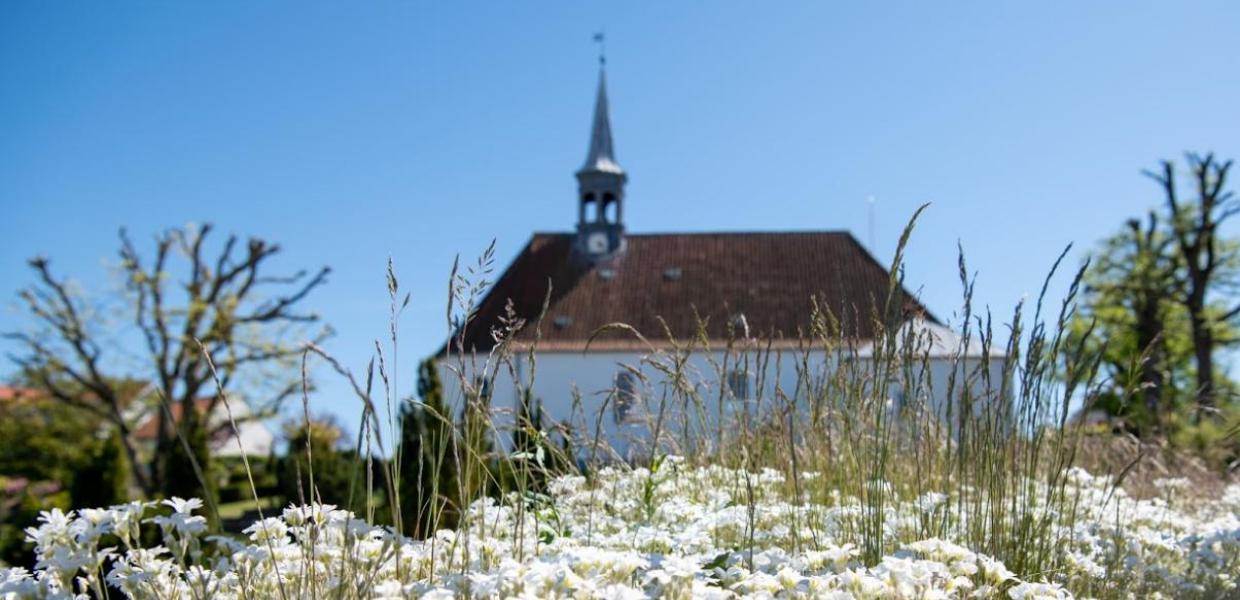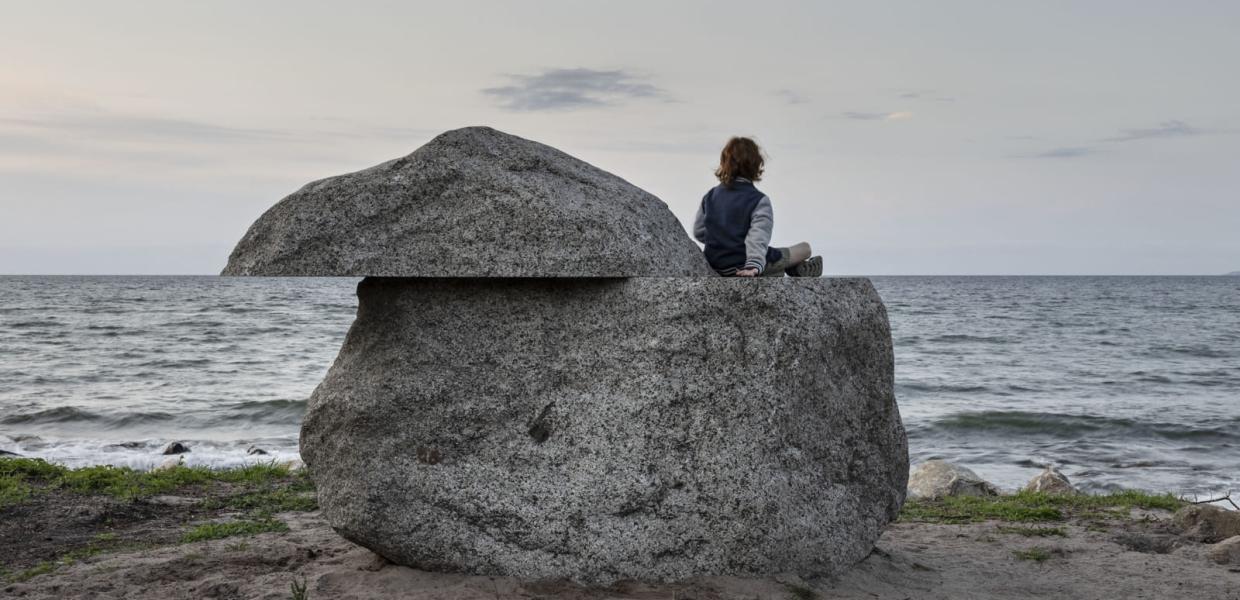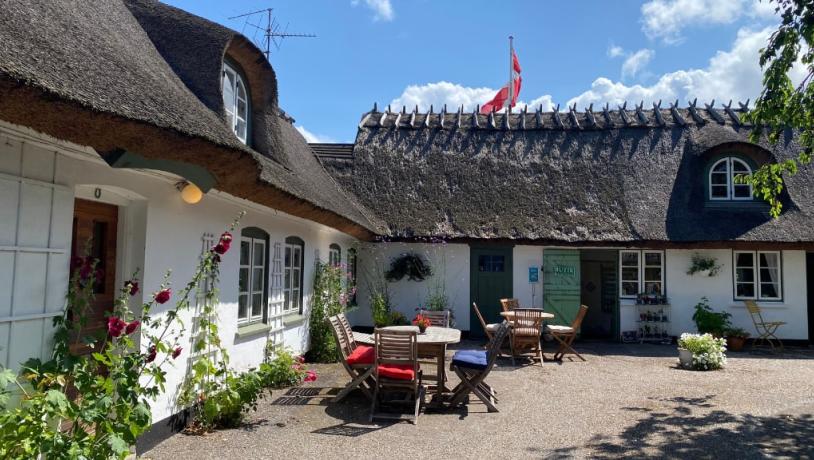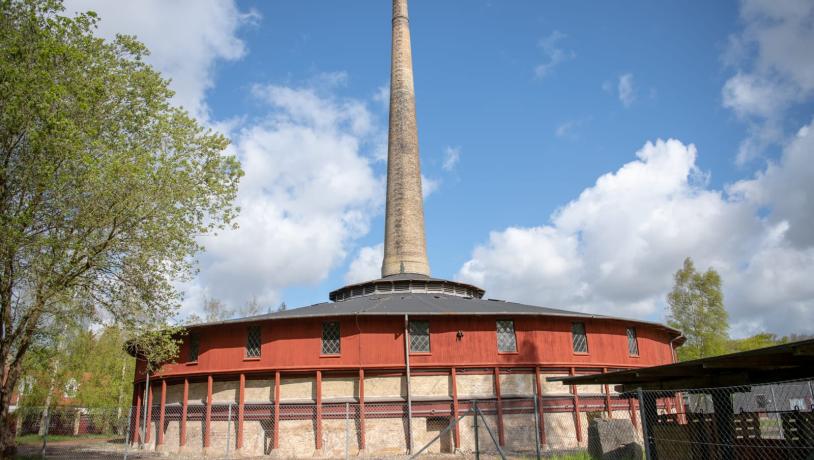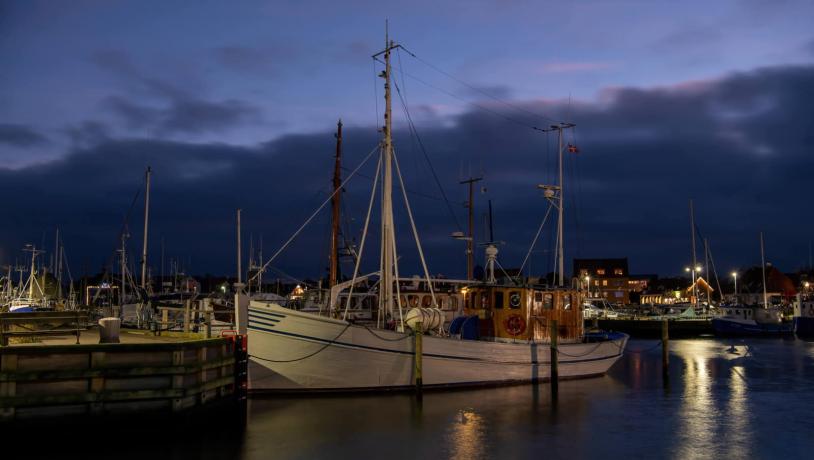The flight across Øresund – the rescue of the Danish Jews, October 1943
In October 1943, more than 7,000 Danish Jews were rescued from deportation and transported to safety in Sweden. Before embarking on what was an extremely dangerous voyage, locals took them in and hid them in their private homes.
Many Jews made passage to Sweden from the coast of North Zealand, where local fishermen transported them on their boats during the night.
During the first years of the German Occupation, Jewish people in Denmark were safe. But when collaboration between the Danish government and the German occupational force broke down after a time of unrest and sabotage carried out by the Danish resistance movement in the summer of 1943, Hitler proclaimed that all Jews in Denmark should be detained and deported. Through diplomatic channels, a warning was given to the Jewish Community in late September: Pack anything of value and flee to Sweden immediately.
Many Jews headed north – to the fishing harbours in North Zealand – with the hope of finding way to safety by crossing the strait of Øresund to Sweden. Many found refuge in private homes while awaiting the dangerous passage – a journey that could last a couple of hours depending on the route and the weather. Some were taken over in large fishing boats or schooners, others in small rowing boats, or even kayaks.
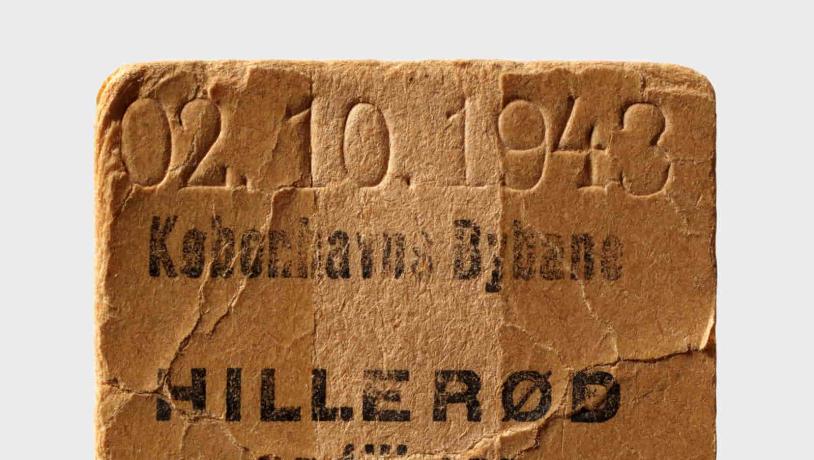
Train ticket from Copenhagen to Hillerød used by a Jew to escape Denmark, October 1943. In order to not arouse suspicion, a return ticket was purchased, even though the purpose was to continue to the coast to get to Sweden.©Frihedsmuseet - Nationalmuseet, DanmarkPhoto:John Lee
The Gestapo became suspicious of the activity in the harbour towns. As a consequence, on the night of October 6, more than 60 Jews were caught hiding in the attic of the church in Gilleleje and later deported to the concentration camp, Theresienstadt.
Subsequent rescues had to take place from more isolated places along the coast. While waiting their turn, Jews hid in the woods and in holiday cottages along the coast. They would also hide in places such as the attic of the brickwork kiln in Nivå, or by the sisters at the Saint Luke’s Foundation near Smidstrup Beach.
The Danish resistance movement coordinated the evacuation, but the rescue of the Danish Jews involved ordinary Danes from all levels of society as well. Resistance towards what was considered an inhumane and barbaric prosecution of Danish citizens resulted in an until then unseen activism among Danish civilians.
Approximately 7,000 of the around 7,800 Jews living in Denmark at the time managed to flee German-occupied Denmark.
A view of Gilleleje Church, where Jewish people hid at the church attic on the fatal night of October 6.©VisitNorthsealandPhoto:Tine Uffelmann
Gilleleje Church - The Jews hiding in the attic
Most of the Danish Jews that came to North Zealand were rescued to safety in Sweden, but for around 60 jews the night between October 6 and 7 became fatal. Jewish families with children and elderly family members were hiding in the attic of Gilleleje Church, waiting for transport to Sweden, when the Gestapo came to arrest them.
They were later deported to the concentration camp, Theresienstadt. A young man hid in the church tower but was taken the next day. He escaped while in captivity in Copenhagen but drowned the following night as he attempted to flee. Most of the captivated refugees from the attic returned to Denmark after the war.
Gilleleje Church is open from April 1 – November 2. Visit to the church attic, by appointment only. The church arranges public tours and city walks during summer and fall breaks.
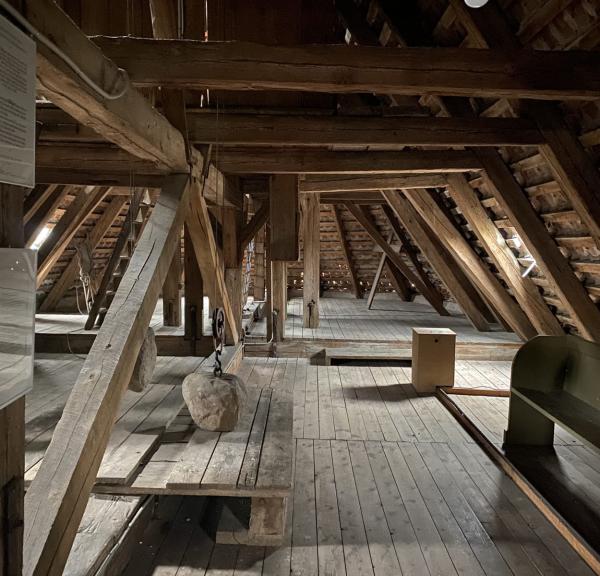
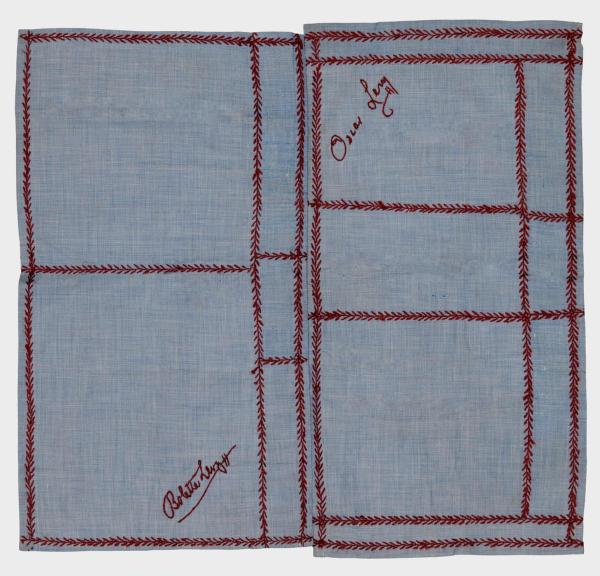
Commemoration: 80 Years Throughout Denmark, the 80th anniversary year will feature a range of commemorative events I 2023.
The story of Tove
Tove Udsholt was only 3 years old, when the Nazis sent out the decree that all Danish Jews should be detained. Tove lived in a small apartment in Copenhagen with her Christian father and Jewish mother. The family decided that her mother would flee with Tove, trying to make passage to Sweden from Gilleleje, while her father stayed put to take care of the apartment, until they came back.
The family had very little means, and Tove and her mother left with nothing more than some clothes, Tove’s teddy bear, and just enough money to buy a train ticket to Gilleleje. Instructions had been given to purchase a return ticket, in order not to arouse suspicion.
Here is Tove’s story – in her own words
Courtesy of Folkedrab.dk – Institute for International Studies, Department for Holocaust and Genocide Studies
When Tove and her mother arrived in Gilleleje, the small town was filled with Jewish refugees. The situation got increasingly tense. Locals hid the refugees, anywhere they could. In an attic in the centre of town, Tove and her mother hid with a group.
They waited several days and nights there, until they could get on a boat. At 3 years old, Tove had a hard time staying quiet. A local fisherman and his wife offered to take Tove in to stay with them. When they got the green light for passage, her mother had to make a crucial choice: Put her daughter at risk on the dangerous voyage, or leave her with the family in Gilleleje?
Tove stayed with the couple, Ketty and Svend, in Gilleleje during the war. She got strict orders not to talk to any men dressed in green or black. The community protected her. “Gilleleje watched over me,” Tove says. Tove was happy in Gilleleje. But when her mother returned, it was not the happy reunion that her mother had hoped for. Tove did not recognize her mother and wanted to stay in Gilleleje.
She reluctantly moved back to Copenhagen with her mother, but her relationship with her mother had become estranged. Tove was stubborn and found her way back to Gilleleje. At 18, she was adopted by Svend and Ketty. She kept contact with her mother, and later in life, reconnected with her father.
Tove is one of 148 Jewish children that were hidden in private homes, at boarding schools or orphanages around Denmark during the war.
The memorial stone for the rescue of the Jews in the dramatic October days in 1943. The memorial stone was made by the artist Karin Lind, Græsted—the stone is located by the beach north of Det Gamle Rådhus in Vesterbrogade in Gilleleje.©VisitNorthsealandPhoto:Laura Stamer
Memorials of October 1943 in North Zealand
Throughout the North Zealand landscape, memorials have been erected so we will never forget.
To commemorate the 80th anniversary, the memorial “Displaced Horizon” by artist Karin Lind is revealed by the beach in Gilleleje. Looking up, in the opposite direction, you can see the Teka Bashofar Gadol memorial, named after a Hebrew prayer, by artist George Weil. Down by Gilleleje Harbour at Stejlepladsen, you can see “The Stem”, created by boat builder Edwin Mortensen.
In Humlebæk, with a look across the Øresund Strait to Sweden, Danish artist Per Arnoldi has created the monument “October 1943”, a dinghy made of black granite. It is located on the Peder Mads Beach just South of Slettenhus. During the Occupation, Slettenhus was named Hotel Gylfe, a meeting place for Danish freedom fighters and a hideout for the Danish Jews before they were sailed to Sweden from Sletten Harbour.
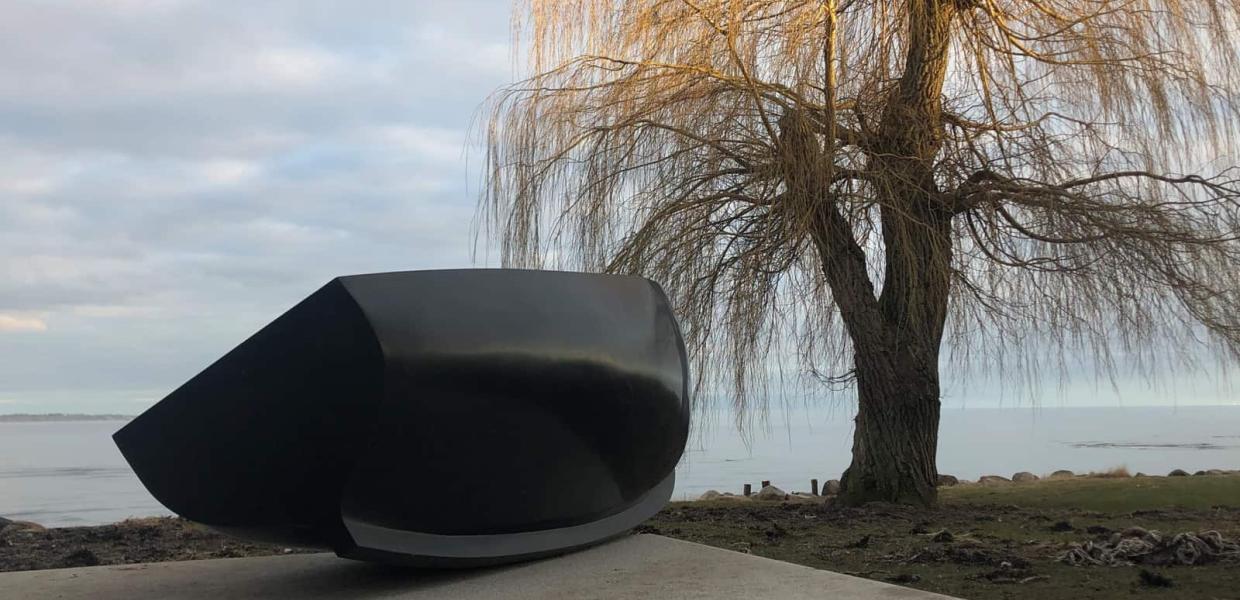
In Humlebæk, with a view across the Sound to Sweden, the Danish artist Per Arnoldi has created the sculpture "October 1943", a dinghy made of black granite.©Per ArnoldiPhoto:VisitNorthsealand
Remembering History: Sites to visit
The Ship Halls - Museum Nordsjælland in Gilleleje
At the local history museum, The Ship Halls, an exhibition depicts the dramatic days of October 1943, when the town became the centre for Jewish refugees seeking help to reach Sweden. The exhibition presents witness accounts and reflects on human actions during a time of war. A dinghy used for the flights is on display at the museum – one of the few boats that still exist from the rescue.
©VisitNorthsealandPhoto:VisitNorthsealand
The Attic at Nivaagaard Brickyard Ring Kiln
In 1943, the town of Nivå was known for its significant brick production. A total of around 500 Jewish refugees were hidden on the dark attic of the brickyard kiln before embarking on the dangerous voyages to Sweden. Today, the ring kiln is a museum.
Take a walk from the ring kiln to the shore and the old ferry landing where the refugees were transported from. From the bird watching tower, you have a great view of the marshland area, today a nature reserve, and on a clear day, you can spot Sweden on the other side.
©VisitNorthsealandPhoto:Tine Uffelmann
When the Jews had to flee: Self-guided tour of Gilleleje
The tour takes you to six designated places in Gilleleje each marked with memorial plaques relating to events that took place in October 1943. Learn more about the stories behind the places and the plaques, created by Gerda Thune Andersen, displaying Jewish symbols and Hebrew inscriptions.
©VisitNorthsealandPhoto:Tine Uffelmann
Book a Tour Guide: Gilleleje in October 1943
A native of Gilleleje, Danish-American authorized tour guide Lisa Tomlinson can be booked for a guided tour of Gilleleje with a focus on the role that the town and its citizens played during October 1943.
